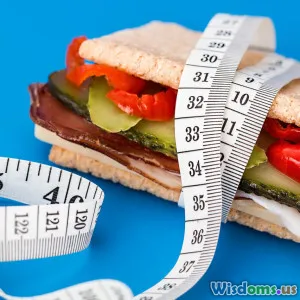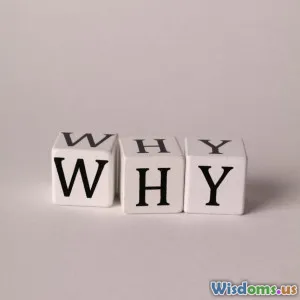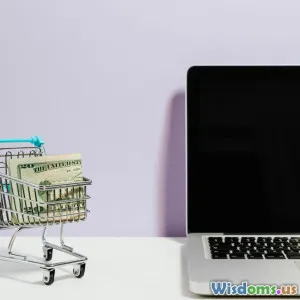
Personal Journey Quitting Plastic for One Year and What I Learned
8 min read One year plastic-free: A personal journey revealing eye-opening lessons on sustainability and mindful living. (0 Reviews)
My One-Year Plastic-Free Journey and What I Learned
Plastic pollution is one of the most pressing environmental challenges of our time, and yet, as individuals, making significant changes to avoid plastic often feels overwhelming. A year ago, I embarked on a personal challenge: to quit single-use plastic for an entire year. What followed was a revealing journey filled with unexpected lessons, moments of frustration, triumph, and ultimately a transformation in how I perceive consumption and sustainability. In this article, I’ll walk you through my experience, the strategies I adopted, and insights that anyone looking to reduce their plastic footprint can benefit from.
The Motivation Behind the Challenge
Why quit plastic? The sheer scale of the plastic problem is staggering. According to a 2020 report by the United Nations Environment Programme, over 300 million tons of plastic are produced every year, with around 8 million tons entering the oceans. This results in ecological damage affecting wildlife and even human health as microplastics enter the food chain.
Personally, I realized how ingrained plastic was in my daily life—from water bottles and coffee cups to packaging and household goods. I wanted to discover if it's truly possible to live without contributing to this plastic epidemic.
Starting Out: The Initial Shock
The first week was eye-opening. Tasks I had never questioned, like buying produce or ordering takeout, suddenly posed daily dilemmas. Supermarket shelves were overwhelmingly plastic-wrapped—bananas in plastic, tomatoes in shrink wrap, large tubs instead of loose goods.
I quickly learned:
- Plastic-free alternatives aren’t everywhere yet. Not all stores offered options like bulk bins or unpackaged items.
- Convenience is a strong barrier. While avoiding plastic cups or straws is doable, avoiding plastic-lined coffee cups or frozen meals was much harder.
- Information is key. Labeling on packaging rarely explains whether plastics are recyclable or harmful, making choices confusing.
Breaking Down the Challenge: Key Strategies I Used
1. Educate and Plan Ahead
Long-term success meant understanding the problem and its nuances. I read studies on plastic pollution, recycling rates, and alternatives. For example, recycling rates for plastic remain low: only around 9% of all plastic ever produced has been recycled effectively (National Geographic, 2018).
Planning ahead helped too—carrying reusable bags, a stainless steel water bottle, bamboo cutlery, and a coffee tumbler ensured I was never caught off guard.
2. Reimagining Shopping Habits
I switched to stores with bulk bins and farmers' markets that allowed me to buy produce unpackaged. Refusing plastic bags and opting for cloth produce bags became a habit. Even dry goods like rice and beans were sourced in reusable containers.
While not perfect, choosing stores prioritizing sustainable packaging helped. A survey from the Ellen MacArthur Foundation shows that more retail chains are increasing their sustainable packaging options, a promising trend.
3. DIY and Upcycling
Instead of buying plastic-wrapped ready meals, I embraced cooking from scratch and repurposing containers. I made household staples like detergent using simple recipes. This reduced both plastic and chemical exposure.
4. Transparent Conversations
I began discussing this challenge openly with friends, family, and colleagues. Responses varied from curiosity to skepticism. Yet, sharing my approach inspired a few to try similar reductions, magnifying impact.
Lessons Learned and Eye-Opening Realizations
Plastic Is Deeply Embedded in Society
Completely avoiding plastic was nearly impossible. Medications, electronics, vehicle parts, and other products rely on plastic. This highlighted the need for industry-wide systemic change alongside personal action.
Impact Trumps Perfection
Avoiding plastic-wrapped tomatoes by buying loose ones reduced my plastic footprint significantly, even if other unavoidable plastic remained. Small wins matter.
Resistance Can Foster Creative Solutions
Refusing plastic pushback initially felt isolating, but it encouraged creative problem-solving, such as making my own produce wraps with beeswax or supporting zero-waste shops.
Plastic-Free Living Enhances Mindfulness
The challenge created a mindful shopping practice, making me question every purchase’s necessity and its environmental impact. This awareness extended beyond plastic, towards broader sustainability choices.
Real-World Environmental Impact
The Plastic Pollution Coalition estimates that an individual cutting out plastic can prevent hundreds of plastic items entering the ecosystem yearly. While my personal avoidance isn’t a perfect model, combined with millions adopting similar choices, the shift can be massive.
A 2023 survey by Greenpeace suggests consumer demand helped accelerate some retail shifts towards compostable or reusable packaging, proving personal choices can influence market trends.
Encouragement for Those Considering Plastic-Free Living
Starting is the hardest part, but every effort counts. Couple your plastic reduction with advocacy and education for broader change. Here are steps to start:
- Start small—replace single-use water bottles with a reusable bottle.
- Bring your own bags and containers.
- Choose fresh, unpackaged foods.
- Support local zero-waste stores and markets.
- Educate yourself and others about plastic pollution.
Conclusion: A Personal Transformation and Call to Action
Quitting plastic for one year wasn’t just a lifestyle change—it was an exercise in environmental empathy and resilience. It showed me that living in alignment with sustainability values is possible, though imperfect, and that every mindful choice pushes the needle towards a healthier planet.
As the global community grapples with climate change and pollution, individual actions like reducing plastic use build momentum. By sharing my journey, I hope others feel empowered to embark on this path too—turning awareness into concrete, impactful change.
Together, we can chip away at the plastic problem, one reusable bag, stainless steel straw, and plastic-free conversation at a time.
References:
- United Nations Environment Programme, 2020, "Single-use Plastics: A Roadmap for Sustainability"
- National Geographic, 2018, "The problem with plastic"
- Ellen MacArthur Foundation, Packaging Trends, 2022
- Plastic Pollution Coalition, Individual Impact Estimates
- Greenpeace, Consumer Survey 2023
Author’s note: This article is based on firsthand experience and extensive research to provide practical insights for readers interested in sustainability.
Rate the Post
User Reviews
Popular Posts



















